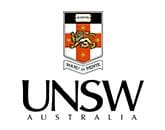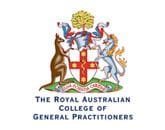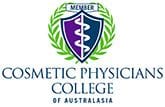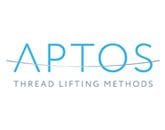Frequently asked questions about Thread Lift Treatments
A thread lift is a type of procedure that uses temporary suture threads to produce a subtle but visible "lift" in the skin. You can have a thread lift in Dr Ho's offices under local anaesthesia. The actual length of time will depend upon the total number of methods used. On average, the procedure typically takes approximately one hour:
- Dr Ho will make tiny incisions with an 18G needle (diameter 1.27mm) that does not usually leave scars during the procedure.
- He begins administering the local anaesthesia, followed by inserting the threads under the skin's superficial fat layer.
- Dr Ho repositions and suspends the patient's loose skin with the strategic placement of threads.
The tiny barbs on each thread open in an umbrella-like fashion to form a support structure that gently lifts sagging tissues of the brow, face or neck. Once in position, your body generates new collagen bundles that encapsulate each thread to help maintain the elevation or lifting effect. The exact placement of the threads will vary from patient to patient, depending on your individual needs. This result in the impact of pulling the skin back and therefore lifting and tightening the face.
When you are under local anaesthesia, you are awake. So if you feel any pain, you can signal to Dr Ho, and he can administer more anaesthesia. There can be more discomfort when patients have multiple threads inserted. Dr Ho adapts the treatment to your preferences. Many patients can resume work 1-2 days after the procedure.
Thread-lift treatments result in an instant and natural-looking improvement in the appearance of the skin.
Unlike traditional surgical facelifts, which leave visible changes and well-hidden but evident scars, Aptos thread lift does not leave scars or alter the face's original features. Instead, Aptos thread lift repositions soft tissues back to their original location. A process of natural protein synthesis then begins after about 10-14 days. Over the subsequent weeks, results will continue to improve, peaking at around six months and lasting for up to 2 years as your own body produce collagen, elastin and hyaluronic acid. Thus, making this form of non-surgical facelift a long-lasting treatment.
The thread itself is entirely biodegradable, leaving a scaffold of new collagen and elastin around the thread to support results, maintaining a smooth and supple texture of the skin.
After a thread lift, you can typically expect to look like you did several years ago.
The ideal thread lift candidate is usually in their late thirties to late fifties with mild to moderate signs of skin laxities. Whereas most patients with excessive laxities will benefit more profoundly from facelift surgery, thread lifts can provide a facelift alternative for patients who do not want surgery or cannot have surgery for medical reasons.
Because you can undergo thread lifts under local anaesthesia, many people with age-related conditions that make them ineligible for surgery (like high blood pressure, type two diabetes and cardiovascular disease) can safely have this treatment.
Dr Ho does not recommend the procedure for patients who are very thin or have too loose skin. In these cases, if you wish to have facial rejuvenation, you can still improve your skin laxities, and Dr Ho will discuss your best alternatives with you.
APTOS threads can be used to treat various parts of the face and body:
- Contours of the face
- Jawline
- Cheeks and mid face area
- Eyebrows
- Neck
- Breast
- Arms
- Abdomen
- Buttocks
- Inner thighs
- Knees
- Known allergy to plastic, biomaterial, non-absorbable fillers
- Active acne or skin infection
- Keloid predisposition
- Auto-immune diseases: scleroderma, sarcoidosis, amyloidosis, etc.
- Anti-coagulant medication e.g., Warfarin
- Haemophilia
- Uncontrolled Hypertension
- Severe diseases
- Collagenosis (collagen-vascular disease)
- Neurological and mental disorders
- Pregnancy, breastfeeding
- Malignancy/Chemotherapy
- Hepatitis B & C, HIV
- Porphyria
*** Please consult with your regular doctor first for personalised medical advice***
It would be best to inform your cosmetic doctor of any treatment you have already received and any currently taking medicines.
DO NOT TAKE an anti-coagulation such as Aspirin, Warfarin, an anti-inflammatory such as Nurofen, Voltaren, or consume alcohol within 48 hours of treatment. You can go on with taking other prescribed medications but stop taking some complementary supplements such as evening primrose oil, vitamin D, A and E, fish oils, flaxseed oil, Magnesium, garlic and Ginkgo before treatment. In addition, on the day of your appointment, you should avoid wearing makeup on your face or using harsh beauty products..
Recovery from a thread lift is comparatively easy. This is because thread lifts are performed under local rather than general anaesthesia, meaning that thread lift patients can drive themselves home and look after themselves immediately after having their procedure. This procedure is ideal for people who have children at home or busy, demanding careers.
Immediately after the treatment, there is usually slight swelling and possibly minor bruising along the treatment area. There is mild discomfort during facial movements due to the threads pulling on the tissue with facial movements. Minor asymmetry from swelling and hypercorrection disappears within 2 weeks.
Most patients take less than a week but some patients may return to normal activities, including work, 1-2 days after thread treatments.
After the procedure, you can be swollen and bruised for up to 2 weeks depending on the number of areas that have been treated. After 2 days, patients are usually able to apply camouflage make-up to hide any sign of pale bruising. In most cases, bruising and swelling is mild, however, it can take up to 10 days to resolve. Hirudoid cream or Arnica tablets can help with swelling and bruising. Sometimes, a slight depression or skin irregularities appear. These inconveniences will subside within a few days after the procedure.
- Take the antibiotic as prescribed to reduce the risk of infection
- Apply ice packs immediately after the procedure
- Take analgesics in case of pain for 2-3 days
- Refrain from applying make-up for a minimum of 24 hours
- Sleep face up, in an elevated position on pillows for about 3-5 nights
- Wash and dry face gently without rubbing or massaging for 5-7 days
- Avoid excessive face and neck movements for about 2 weeks
- Avoid face and neck massages for 1 month
- Avoid over-exposure to direct sunlight and do not use tanning beds for 2 weeks
- Avoid sports and exercise for 2 weeks
- Do not use saunas for about 3 weeks
- Avoid dental treatments for about 3 weeks
Like all procedures of this type, there is a possibility of side effects, although not everybody experiences them. These side effects are in the prevalence of about 3%. Scientific reviews agreed that most of these adverse events were minor, self-limited, and of short duration. They may include:
- Transient pain, swelling, bruising & erythema of the treated area may occur.
- Asymmetry: Usually temporary caused by swelling and will resolve itself in 2 weeks.
- Transient rippling, dimple formation and skin retraction
- Slight depression or skin irregularity
- Inflammation/Infection
- Visible contouring of the thread
- Weakening of thread fixation
- Thread migration
- Material sensitivity/allergic reactions
- Sensory nerve injury (very rare)
- Deeper structures such as nerves, blood vessels and muscles may be injured during the procedure and may be temporary or permanent (very rare)
In summary, thread lifts are low risk, thanks to how non-invasive they are. As a result, there is virtually no risk of scarring, severe bruising, bleeding or other complications after having a thread lift. In rare cases, patients may experience irritation, infection or their sutures becoming visible under their skin. However, if this occurs, the threads can be removed, and the patient's face will return to its initial state.
First and foremost, follow the after-treatment instructions closely to avoid your threads from being damaged before they can integrate with your tissue. For example, don't rub your face too hard, pay attention to your sleeping position, and avoid strenuous activities for two weeks.
The results of a thread lift procedure can be affected by several things, such as the type of threads, the methods used and the location of the thread implants and the elasticity of the tissue and skin type.
Threads made of Polydioxanone (PDO) material absorb in 3-6 months in the body. Polylactic acid threads absorb in 12-16 months on their own or 18-24 months when blended with Polycaprolactone.
The aesthetic improvement can outlast the actual physical presence of the thread. The ability to form a collagen and elastin scaffold (neocollagenesis) separates an average and a superior thread. This scaffold can maintain the lifting effect and extend the result of a threadlift by a further 6-12 months. Many studies have found that PDO material only elicits a minimal tissue reaction. Polylactic acid can stimulate a large amount of collagen, but the collagen fibres are irregular, rendering them weak. The addition of Polycaprolactone into the Polylactic acid creates more regular collagen fibres, stimulates more elastin fibres, and provides a broader area of tissue rejuvenation.
Thus, Aptos thread, a blend of Polylactic acid and Polycaprolactone, is longest lasting and has the most favourable neocollagenesis profile on the market at present.
The good news is you can improve the longevity of your aesthetic result by performing good skincare, keeping out of the sun, eating plenty of fruit and veg, avoiding smoking and reducing excessive alcohol consumption.
Dr Ho is an Accredited Trainer for the Aptos Thread Lifting methods, who can develop a customised plan to help you achieve your aesthetic goals.
APTOS threads and methods were introduced to the aesthetic world more than 25 years ago. They were first developed in 1996 by Dr Marlen Sulamanidze.
APTOS threads are currently in more than 50 countries. In addition, more than a million threads are sold all over the world.
Aptos threads are composed of Polylactic acid and Polycaprolactone. Both materials have over a decade long safety track record in wound closure, medical implants, tissue engineering, orthopedic devices, drug delivery systems, etc. Resorption of Aptos threads occur by hydrolysis. The threads decompose into body metabolites, water, and carbon dioxide that eventually excrete in urine and breath. A fibrous network of new collagen and elastin forms as the process of biological thread degradation stimulates neocollagnenesis.
APTOS products comply with the requirements of European Pharmacopoeia, TGA of Australia, and FDA of the United States, which guarantees quality throughout the entire manufacturing process and that scientific evidence supports their efficacy.
As Aptos thread lifting procedures involve only local anaesthesia and there is no cutting of the skin, the process is considered less risky than a complete surgical facelift.
Aptos thread lifting provides up to 30 different types of threads and over 50 methods of application. The cost of thread correction or Aptos lifting depends upon the type of thread, the method used, and the number of manipulations planned. Therefore, it is essential to be evaluated by an Aptos-certified doctor to determine correction zones and the scope of work before the final cost is formed. As an Accredited Trainer for Aptos Thread Lifting methods, Dr Ho can create a personalised plan to help you reach your aesthetic goals.
In general, the cost of a single Aptos thread lift treatment typically starts at around $1800. However, purchasing two or three thread methods in a package can provide more economical options and cost about $3000 to $6000, depending on the treated area.








